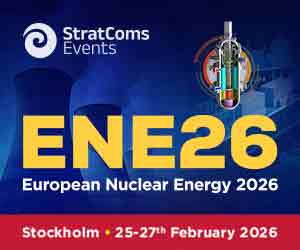Post - Articles
Methane-filled lake may solve Rwanda’s energy problem
- 15 years ago (2010-08-18)
- David Flin
Lake Kivu, which covers an area of 1000 square miles on a border between Rwanda and Congo, lies on a rift that allows methane and CO2 to leak into the bottom of the lake. Pockets of these gases sometimes seep to the surface, threatening residents by the lake. There are also fears that the explosive nature of methane makes the lake in its current state a potential disaster site.

European Nuclear Energy 2026
To prevent this, and to help resolve its energy shortfall, Rwanda has launched Kibuye Power, a pilot project to extract methane from the lake and funnel it to an onshore plant where it is converted into 4MW. There are plans to increase this to 50MW within two years.
Over this period, the Rwandan government hopes to get a third of its power from Lake Kivu, and aims to produce enough energy to allow it to export to neighbouring countries.
Investors include Contour Global, a US-based company that specialises in new or under-served markets. Last year, the company signed a $325 million agreement with the Rwandan government to extract methane and develop a 100MW energy plant on the lake.
One reason why Rwanda is confined to primary agricultural initiatives is the acute shortage of electricity. National power plants generate just 60MW, while the country — dependent on imported oil and hydroelectric power — regularly experiences frequent blackouts. Power is accessed by 6 per cent of the population, chiefly residents of urban areas, but four out of five citizens live in rural areas.
